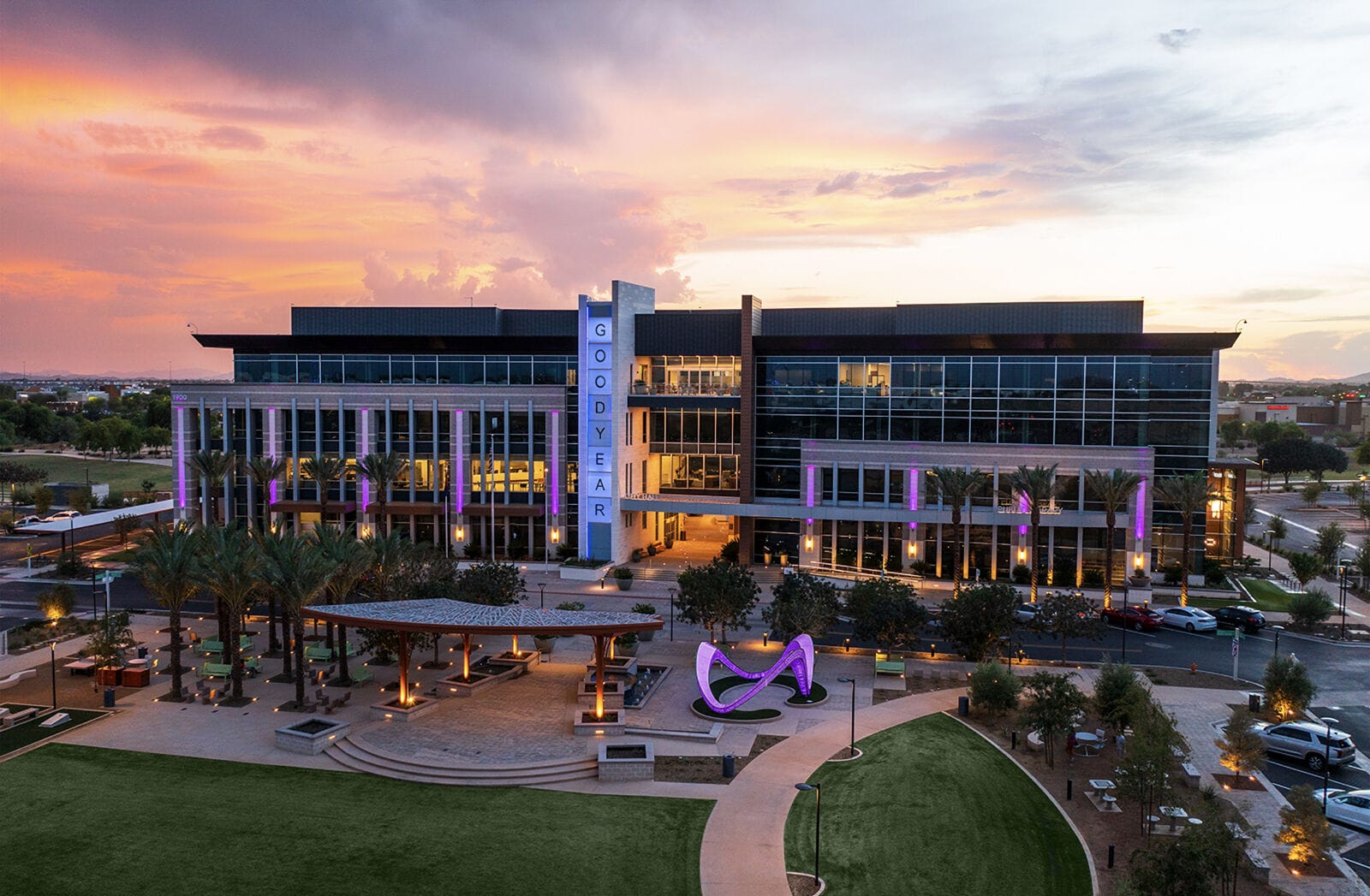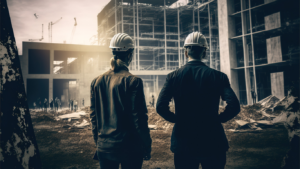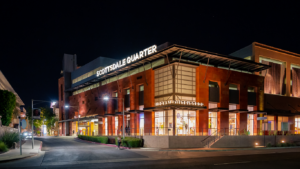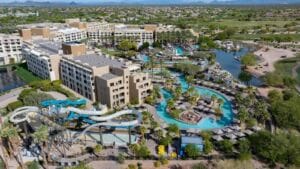Just a few decades ago, Downtown Phoenix was a place where office workers commuted in the morning, before returning home as soon as the day’s work was finished. Today, investments across multiple sectors have transformed Downtown Phoenix into a vibrant community at all hours.
Other municipalities in the Valley have followed suit, making concerted efforts to give their cities unique identities. Downtown Mesa has become a weekend destination, with access to light rail, plenty of bar and dining options, the Nile Theater, the ASU MIX Center and business accelerators.
Goodyear has taken advantage of the opportunity to carve out its own downtown with GSQ — a new city center featuring dining, entertainment, office space and shopping, with multifamily living and a hotel to come.
“Thriving cities and towns across the U.S. have a common thread — vibrant public centers that enhance quality of life and reflect the spirit of community,” says Chris Camacho, president and CEO of the Greater Phoenix Economic Council. “These downtowns are also often drivers of arts and innovation through the mix of retail, hospitality, local businesses and design of spaces that drive a sense of pride for residents, create quality jobs and uplift the broader economy.”
Downtown Phoenix
One of the initial projects that reshaped Downtown Phoenix was CityScape. Jeff Moloznik, senior vice president of development at RED Development, emphasizes that people make a place, and at the time, there weren’t any residents living downtown.
“When we started CityScape, if we tried to get a restaurateur to come downtown, they’d say, ‘I can go anywhere else in the Valley and get a predictable stream of customer base and revenue,’” he recalls. “A watershed moment was when the Arrogant Butcher opened up, and all of a sudden there was a restaurant doing $1,000 per square foot in retail sales.”
According to Moloznik, a projection showed that having a grocery store in the area increased annual residential growth projections from around 3% to 9%.
“That doesn’t seem like a lot, but when you start talking about tens of thousands of people being there, it’s a huge difference,” he says. “There’s an incredibly dedicated resident base here that wants to see the area succeed.”
MORE NEWS: What Prop 479’s passage means for the Valley’s future
Reflecting the demand for downtown living, more than 8,000 apartment units have been added since 2015. Devney Majerle, president and CEO of Downtown Phoenix Inc., says that that intentionality is key in any revitalization effort, and multifamily construction has been “incredibly transformative for the street-level vibrancy, the density in downtown and all the retail that tends to follow that.”
“We want to make sure downtown continues to be for anyone who wants to live, work or learn here,” she continues.
Due to the efforts of Downtown Phoenix Inc. and many others, the area is also an entertainment and leisure district, with venues like Chase Field, Phoenix Convention Center, PHX Arena and Arizona Financial Theater bringing in large crowds throughout the year.

Downtown Mesa
The City of Mesa has a storied history, and its downtown is part of that legacy. Jeff McVay, manager of urban transformation at City of Mesa, notes that John Giles, the former mayor, was “very focused on downtown,” and created the Office of Downtown Transformation in 2015.
Mesa’s plethora of small, owner-operated businesses creates what McVay calls richly invested residents.
“There’s a community here. We’re a city of 510,000 people, but we have a downtown that is approachable,” he continues. “The fact that almost every one of our businesses is owner operated — you can go into most of our shops and actually talk with the owner — it creates a unique feeling.”
In 2022, Arizona State University expanded its presence into Downtown Mesa with the Media and Immersive eXperience (MIX) Center, a joint project between the city and ASU. The three-story, 118,000-square-foot facility houses programs from the Herberger Institute for Design and the Arts and the Sidney Poitier New American Film School related to digital technology, experience design, film production and immersive media.
The MIX Center is located within the larger Plaza at Mesa City Center, which includes a public park with an event lawn, splash pad and seasonal ice rink. The J. Orin Edson Entrepreneurship + Innovation Institute at ASU provides resources to entrepreneurs in Mesa, along with students and faculty interested in launching new ideas.
Between the Nile Theater, boutique shops, trendy restaurants and light rail accessibility, Downtown Mesa is a rapidly changing landscape of revitalization and innovation, according to McVay.
“We do as many events downtown as possible to help drive traffic here. I tell people all the time that we just have to get people to Downtown Mesa,” he says. “Once they’ve been here, they’ll come back.”

Downtown Goodyear
Once an agricultural town, Goodyear has grown exponentially in recent decades, following a similar trend of many West Valley municipalities.
“Our population is growing and evolving from an agricultural community into a thriving city, [with a] strong economic base,” says Wendy Bridges, economic development director for the City of Goodyear.
In what once was a scallion farm, Goodyear is taking advantage of a special opportunity — helping build a downtown from the ground up. When Globe Corporation reacquired the property, Bridges explains, the concept of it serving as Goodyear’s downtown came up in conversations with the city.
“Rather than going through and retrofitting something that already existed, like what is happening in other communities, we had a blank slate to start with,” Bridges explains. “This is a once-in-a-career kind of opportunity.”
Surveys of residents showed that they desired a city center that could serve as a focal point for the community. That connection to community is reflected in the makeup of GSQ, with Bridges noting that there is a focus on attracting the kinds of amenities residents ask for.
“Downtowns are more than businesses and buildings,” she explains. “If it’s done right, it can be the heart of the city and serve many generations to come.”
Phase one of GSQ includes Goodyear’s new city hall, a library, a two-acre park, two parking garages and an office space called GEN1. Meeting residents’ desire for walkability, GSQ is a mixed-use space with high-end and fast-casual restaurants, along with both boutique and big-box stores. In the future, the area will also include multifamily residential, additional offices and a hotel.
Camacho concludes, “The intentional efforts of these municipalities to develop downtowns show commitment to elevating the identity of a community and its people while driving diverse economic opportunities.”




